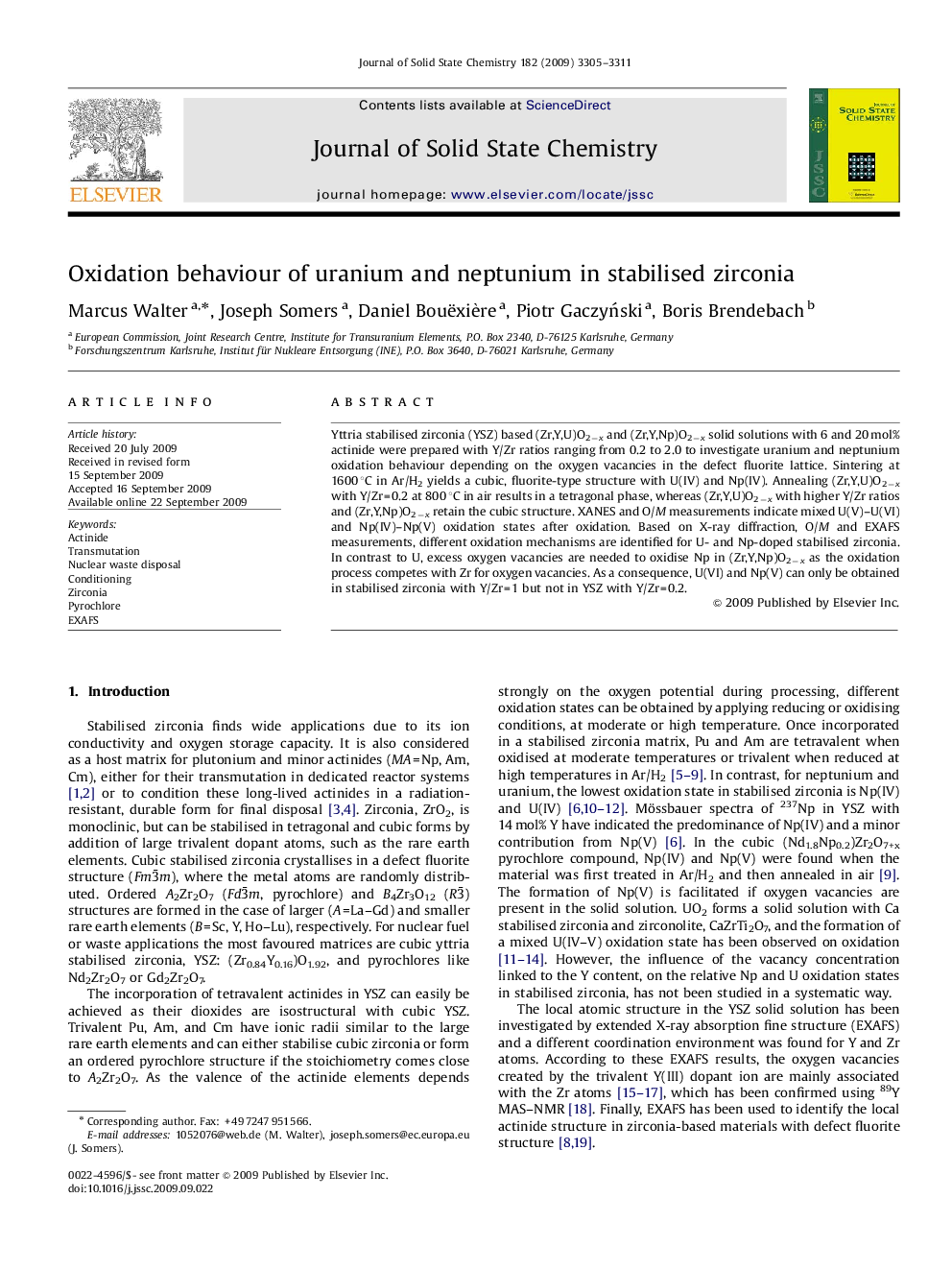| کد مقاله | کد نشریه | سال انتشار | مقاله انگلیسی | نسخه تمام متن |
|---|---|---|---|---|
| 1333575 | 979085 | 2009 | 7 صفحه PDF | دانلود رایگان |

Yttria stabilised zirconia (YSZ) based (Zr,Y,U)O2−x and (Zr,Y,Np)O2−x solid solutions with 6 and 20 mol% actinide were prepared with Y/Zr ratios ranging from 0.2 to 2.0 to investigate uranium and neptunium oxidation behaviour depending on the oxygen vacancies in the defect fluorite lattice. Sintering at 1600 °C in Ar/H2 yields a cubic, fluorite-type structure with U(IV) and Np(IV). Annealing (Zr,Y,U)O2−x with Y/Zr=0.2 at 800 °C in air results in a tetragonal phase, whereas (Zr,Y,U)O2−x with higher Y/Zr ratios and (Zr,Y,Np)O2−x retain the cubic structure. XANES and O/M measurements indicate mixed U(V)–U(VI) and Np(IV)–Np(V) oxidation states after oxidation. Based on X-ray diffraction, O/M and EXAFS measurements, different oxidation mechanisms are identified for U- and Np-doped stabilised zirconia. In contrast to U, excess oxygen vacancies are needed to oxidise Np in (Zr,Y,Np)O2−x as the oxidation process competes with Zr for oxygen vacancies. As a consequence, U(VI) and Np(V) can only be obtained in stabilised zirconia with Y/Zr=1 but not in YSZ with Y/Zr=0.2.
The O/U ratio in oxidised (Zr,Y,U)O2−x depends on the Y/U ratio, whereas O/Np in (Zr,Y,Np)O2−x correlates with the Y/(Zr+Np) ratio. This indicates that both Zr and Np compete for oxygen vacancies, which hinders the Np oxidation at low Y/Zr ratios.Figure optionsDownload as PowerPoint slide
Journal: Journal of Solid State Chemistry - Volume 182, Issue 12, December 2009, Pages 3305–3311